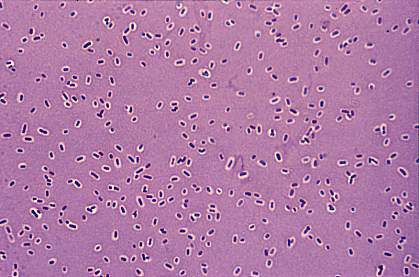You are here
September 10, 2012
Genome Sequencing Tracks Bacterial Outbreak

Last year, a deadly outbreak of antibiotic-resistant bacteria kept NIH’s Clinical Center in a state of high alert. NIH staff used genome sequencing to track the microbes' spread, an approach that can be used to help control similar outbreaks in the future.
In June 2011, a severely ill 43-year-old woman was transferred from a hospital in New York to the NIH Clinical Center, a 243-bed research hospital on the NIH campus in Bethesda, Maryland. The medical staff knew she was infected with bacteria that were resistant to multiple antibiotics, so she was put in isolation immediately. Additional precautions were taken to keep the bacteria away from other patients.
After a month in the hospital, the woman was discharged and never came in contact with another patient. But a few weeks after she left, the same kind of infection was found in 2 other patients. Infections were discovered over the next 4 months at the rate of about 1 a week. Klebsiella pneumoniae, the bacteria responsible for the outbreak, is a growing threat in health care facilities, primarily affecting patients with compromised immune systems.
The Clinical Center staff teamed up with researchers from NIH's National Human Genome Research Institute (NHGRI) to figure out how the infection was spreading. The team sequenced the DNA of bacteria taken from each of the 18 patients. Having the complete sequences let the scientists see every detail of the bacteria's genetic code. Their report appeared in the August 22, 2012, issue of Science Translational Medicine.
The researchers found that the K. pneumoniae going around the Clinical Center originated with the patient from New York. Tiny differences revealed that the bacteria were transmitted to other patients on at least 3 separate occasions, creating 2 main groups of infected patients. The bacteria came from at least 2 different parts of the original patient's body.
As the outbreak continued, the infection-control team employed increasingly intensive strategies to stop the bacteria. They used a vapor of hydrogen peroxide to sanitize rooms and removed sink drains where K. pneumoniae had been detected. Hospital staff and equipment were dedicated to the sole care of infected patients.
The patient from New York was treated with the help of colistin, an older, toxic antibiotic considered a drug of last resort. But 11 of the patients died—6 from the infection and 5 from their underlying diseases.
The researchers say other hospitals will be able to use this approach to better understand the infections they are battling. “This study makes it clear that genome sequencing, as it becomes more affordable and rapid, will become a critical tool for healthcare epidemiology in the future,” says Dr. David Henderson, deputy director for clinical care at the NIH Clinical Center.
“Genomic data can identify unexpected modes of transmission,” says NHGRI senior investigator Dr. Julie Segre. “Though the transmission path is difficult to detect, the genomic data is indisputable.”
Related Links
References: Science Translational Medicine. 2012 Aug 22;4(148):148ra116. PMID: 22914622.
